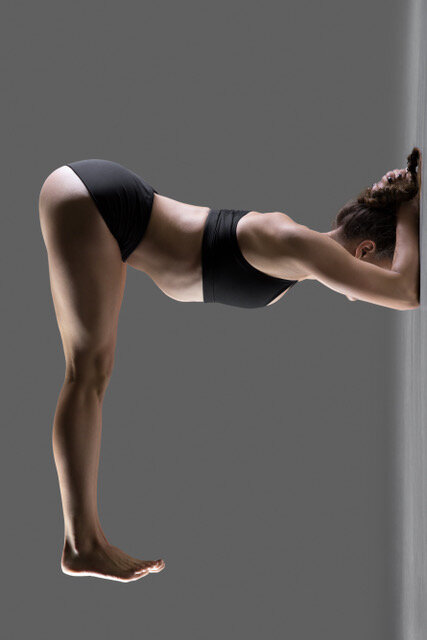The Tova Maneuver
Working with Dr. Loren Fishman for fourteen years opened a door for me to the world of yoga. Even though I had taken an elective yoga course during my physical therapy education, I thought it to be more a spiritual practice and gentle exercise. Dr. Fishman was the one who, for me, made the connection between yoga and physical therapy, as he practiced and taught it decades before it became mainstream in medicine. As a biomechanics enthusiast I became interested in the physiological and biomechanical aspects of yoga and kept the spiritual aspect largely out of my practice. Dr. Fishman practiced Iyengar yoga, while I was drawn to Anusara yoga, which emphasizes alignment while introducing a gentle flow. Anusara aimed to promote core stability and spinal mobility (Pizer, 2020), all of which I believe are part and parcel of the type of physical therapy I provide my patients. I was introduced to Anusara by my yoga teacher back in 1998, and with her attended several workshops given by Anusara teachers. However, regardless of the type of yoga practice, I always enjoy discussing the acquired knowledge from the workshops, which solidified yoga poses as a part of treatment and exercise. I do believe yoga poses can help reduce pain, increase strength, and promote mobility. As such, I’ve incorporated yoga poses into my physical therapy practice.
During the winter of 2004 while pregnant with my daughter, the practice moved to a new location. It was a combined effort of all office staff to move over a weekend so our patients would be able to continue treatments without interruption. Lifting and moving heavy treatment tables awoke my right shoulder pain. As a pregnant woman, I could not take any anti-inflammatory medication of any kind, nor treat my shoulder inflammation with ultrasound. I walked into Dr. Fishman’s office to discuss other options, when he suggested I try a headstand pose in yoga. At the time he was using Electromyography (EMG) to examine shoulder girdle muscle activity during headstand which he found to be helpful in rotator cuff syndrome. Years later he was the leading author in a paper on this topic (Fishman, Wilkins, Ovadia, Konnoth, Rosner, Schmidhofer, 2011). I was willing to try it, but when I called my OBGYN for her approval she objected to the full inversion (standing on the head) position.
I remembered my Anusara yoga workshop where I was able to practice Feathered Peacock Pose for the first time in my life and how it improved my shoulder blades tremendously for better range of motion and strength. Still under the restricted orders of my doctor, I began to think how I could emulate the same feeling (proprioception) without using the actual inversion pose. I practiced placing my forearms on the wall, stepping away from it to the point where I could feel that my forearms were bearing the weight of my upper body. My success was measured by the fact that my pain disappeared after practicing it several times and finding out that clasping my fingers to nestle the crown of my head yielded a better weight bearing result.
I went back to Dr. Fishman’s office to share my revelation. He in return suggested to call it the “Tova Maneuver.” I am not the only person to benefit from practicing this position against the wall, as a full inversion headstand pose has contraindications for people with cervical spine arthritis or other pathologies; Hypertension and glaucoma to name a few (Fishman et al., 2011).
The maneuver provides activation of the subscapularis muscle which is the strongest muscle of all the rotator cuff, and biomechanically depresses and internally rotates the humerus head during arm elevation (Physiopedia.com, n.d.). Immediate relief is experienced following the maneuver when a person performs arms abduction with 3 to 5 repetitions (Fishman et al., 2011).
The following are instructions for the Tova Maneuver:
Clasp your fingers and place your forearms against the wall (your elbows should be at shoulder’s width and height (parallel to the shoulders).
Place the crown of your head in the triangle formed by your hands.
Step about 2-3 feet away from a wall, bending your torso forward by cutting from the hips, leaning on your forearms.
Draw your shoulder blades back towards the lower part of your ribcage and feel that your shoulders want to "disconnect" from their sockets, most of your weight is on your forearms, deepening your torso forward.
Relax your head and chest while leaning on your forearms (you might feel your tight hamstrings by then) and breath in and out deeply, 5 times (instead of holding your breath!), which is the equivalent of 30 seconds.
Breathing will enhance your posture and the exercise.
I have found that bending (cutting) through the hips can deepen shoulder blades retraction and lengthen the torso, allowing people with limited range of motion in the shoulders, or a novice, to accomplish the pose and achieve the activation of the subscapularis muscle without having much weight on their head, by focusing the load on the forearms.
I hope you will find this information and practice useful.
Tova
References
Fishaman, L.M., Wilkins, A.N., Ovadia, T., Konnoth, C., Rosner, B., Schmidhofer, S. (2011). Yoga-Based Maneuver Effectively Treats Rotator Cuff Syndrome. Topics in Geriatric Rehabilitation. 27(2),151–161. DOI: 10.1097/TGR.0b013e31821bfe68
Pizer, A. (2020) Anusara yoga origins, methodology, and scandal. Verywellfit.com. Retrieved July 31, 2020 from https://www.verywellfit.com/anusara-yoga-3566881actice.
Physiopedia.com (June 7th, 2020). Subscapularis. Retrieved Aug 26, 2020 from https://www.physio-pedia.com/index.php?title=Subscapularis&oldid=240539

